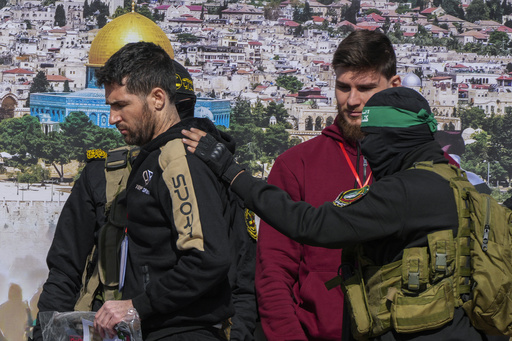
JERUSALEM — On Saturday, Israel freed 369 Palestinian prisoners and detainees as part of an ongoing negotiation for Israeli hostages held by Hamas, amidst a fragile ceasefire. This event highlights the complex dynamics between Israel and Palestine, where the former categorizes these detainees as terrorists, while many Palestinians regard them as freedom fighters against decades of military occupation.
In Palestinian society, incarceration is a common experience, often affecting friends and family members over a range of offenses, from militant actions to minor infractions, such as throwing stones. Many Palestinians are held in administrative detention for extended periods without trial, a measure Israel argues is necessary for security and to protect sensitive intelligence.
Among those released, 36 individuals had received life sentences due to their involvement in fatal attacks against Israelis. Twelve of these detainees returned to their homes in occupied territories including the West Bank and eastern Jerusalem. Medical personnel reported that four of the released individuals required urgent medical attention, while 24 others with life sentences were exiled following their release.
The release included individuals held in Gaza following the attacks by Hamas on October 7, 2023, which escalated the ongoing conflict. In terms of the ceasefire agreement, Israel pledged to release more than 1,000 detainees from Gaza, provided they were not involved in the initial attacks.
Among the notable prisoners freed since the truce took effect on January 19 are Ahmed Barghouti, a 48-year-old who was a prominent figure in militant operations during the second intifada. Barghouti was serving 13 life sentences due to his role in orchestrating assaults that resulted in the deaths of Israeli civilians.
The Sarahneh brothers, three men from East Jerusalem, also gained their freedom after spending over two decades in prison for their participation in suicide bombings during the same uprising. While two of the brothers returned to the West Bank, the third was sent to Egypt.
In addition, Hassan Aweis, 47, and Abdel Karim Aweis, 54, were released after nearly 23 years in jail. They faced severe charges, including manslaughter and bomb planting. Hassan described his emotions as a blend of pain and joy upon release, while Abdel Karim was also extradited to Egypt.
Another notable release was Iyad Abu Shakhdam, 49, who faced sentences equating to 18 life terms for his involvement in attacks attributed to Hamas during the second intifada, which included a devastating bombing that resulted in numerous fatalities.
Jamal al-Tawil, 61, known for his political role within Hamas, had spent nearly two decades in Israeli custody, facing multiple arrests. Most recently detained in 2021, he was hospitalized immediately after his release due to health concerns.
Mohammed el-Halabi, aged 47, previously managed the Gaza operations of World Vision, a Christian humanitarian organization. Arrested in 2016 and accused of misappropriating funds for Hamas, he was released after investigative findings did not support the allegations against him.
Another figure of interest is Zakaria Zubeidi, 49, known for his militant leadership during the second intifada, who later transitioned into cultural activism within the Jenin refugee camp. His notorious escape from a high-security prison was a source of inspiration, but he was eventually rearrested.
Other detainees included Mohammed Odeh, Wael Qassim, and Wissam Abbasi, all implicated in orchestrating deadly attacks during the second intifada, and Mohammed al-Tous, who had the distinction of being the longest continuously held prisoner in Israel until his release earlier this month.
As the ceasefire persists, the landscapes of both Israeli and Palestinian societies remain deeply intertwined, shaped by the stories of those who have been released.

